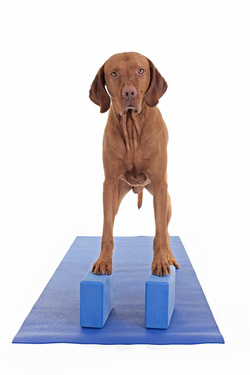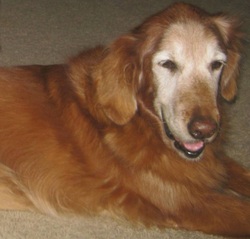
Balance is one of my favorite things to train, in my patients, my kids, and even myself. It's so rewarding to see progress in this area and its typically fun to train. So, 7 sevens reasons why better balance benefits both you and your dog!
1. Keeps your dog young. Balance is foundational to fitness and good health, which delays the onset of signs of aging.
2. Strengthen your dog's core. A strong core leads to better quality of life.
3. Improves performance in sports, and life in general. Whether its chasing birds in the yard or chasing the lure, better balance allows your dog to do better.
4.Protects against injury. This is a big one. This is one of the best reasons why every dog, including yours, would benefit from balance training. This not only includes major injuries and falls but those tweaks and strains of daily life too. Better balance, less likely to get hurt. Period.
5. Reduces Anxiety. Balance training requires concentration and focus. Achieving and maintaining balance becomes the focus instead of whatever is making your dog feel ill at ease. And exercise in general produces an overall sense of well-being.
6. Boosts the Brain. Studies indicate that exercise wards off the effects of dementia in both people and their canine pals. Complex movements force the mind to work harder and balance training is a great way to stimulate this.
7. Gives Fast Results. Balance training is quite rewarding in that improvement can be seen quickly. Balance is a learned activity so improvement can be seen in as little as 2 weeks of consistent training 3-4 x week. There's no reason to delay starting your dog's balance training!
1. Keeps your dog young. Balance is foundational to fitness and good health, which delays the onset of signs of aging.
2. Strengthen your dog's core. A strong core leads to better quality of life.
3. Improves performance in sports, and life in general. Whether its chasing birds in the yard or chasing the lure, better balance allows your dog to do better.
4.Protects against injury. This is a big one. This is one of the best reasons why every dog, including yours, would benefit from balance training. This not only includes major injuries and falls but those tweaks and strains of daily life too. Better balance, less likely to get hurt. Period.
5. Reduces Anxiety. Balance training requires concentration and focus. Achieving and maintaining balance becomes the focus instead of whatever is making your dog feel ill at ease. And exercise in general produces an overall sense of well-being.
6. Boosts the Brain. Studies indicate that exercise wards off the effects of dementia in both people and their canine pals. Complex movements force the mind to work harder and balance training is a great way to stimulate this.
7. Gives Fast Results. Balance training is quite rewarding in that improvement can be seen quickly. Balance is a learned activity so improvement can be seen in as little as 2 weeks of consistent training 3-4 x week. There's no reason to delay starting your dog's balance training!


 RSS Feed
RSS Feed